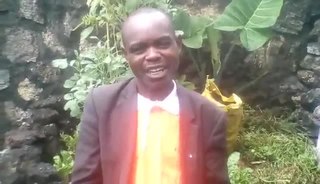Related Research Articles
Most languages of Europe belong to the Indo-European language family. Out of a total European population of 744 million as of 2018, some 94% are native speakers of an Indo-European language. Within Indo-European, the three largest phyla in Europe are Romance, Germanic, and Slavic; they have more than 200 million speakers each and together account for close to 90% of Europeans. Smaller phyla of Indo-European found in Europe include Hellenic, Baltic, Albanian, Celtic, and Armenian ; Indo-Aryan, though a large subfamily of Indo-European, has a relatively small number of speakers in Europe.
Luhya is a Bantu language of western Kenya.

Bontoc (Bontok) is the native language of the indigenous Bontoc people of the Mountain Province, in the northern part of the Philippines.
Ngiri is a Bantu language closely related to Lingala.
Makonde, or Kimakonde, is the language spoken by the Makonde, an ethnic group in southeast Tanzania and northern Mozambique. Makonde is a central Bantu language closely related to Yao. The Matambwe (Matembwe) and Mabiha (Maviha) dialects are divergent, and may not be Makonde.
The Kele language, or Lokele, is a Bantu language spoken in the Democratic Republic of the Congo by the Kele people.
Yaka, also spelled Iaca and Iyaka, is a Bantu language spoken in the Democratic Republic of the Congo and Angola. There are two dialects, Yaka proper, which comprises 99% of speakers, and Ngoongo. The alleged varieties Pelende and Lonzo are political rather than ethnolinguistic entities.
Mijikenda is a Bantu dialect cluster spoken along the coast of East Africa, mostly in Kenya, where there are 1.9 million speakers but also in Tanzania, where there are 100,000 speakers. The name Mijikenda means "the nine settlements" or "the nine communities" and refers to the multiple language communities that make up the group. An older, derogatory term for the group is Nyika which refers to the "dry and bushy country" along the coast.
West Teke is a Bantu language spoken in the Republic of Congo and Gabon.

Lega is a Bantu language, or dialect cluster, of the Democratic Republic of the Congo. There are two major varieties, Shabunda Lega and Mwenga Lega; Mwenga Lega, with about 10% of speakers, finds Shabunda difficult to understand. Kanu has been assigned a separate ISO code but is a dialect of Shabunda, and no more divergent than other dialects.
Bembe is a Bantu language of the Democratic Republic of the Congo and Western Tanzania. According to Ethnologue, it forms a dialect continuum with the Lega language through Mwenga Lega.
Kela, or Lemba, and Yela are a Bantu language of the Democratic Republic of Congo spoken by several hundred thousand people in the Kasai-Oriental, where the spoken dialect is "Kela", and Équateur Province, where the spoken dialect is "Yela".
Ding is a Bantu language that is spoken in the Democratic Republic of Congo.
The Ki language, Tuki, is a Southern Bantoid language of Cameroon.
Taliang is a Bahnaric language spoken by the Jeh-Tariang people of Laos and Vietnam. It is possibly related to the Stieng language of Vietnam and Cambodia.
Holo is a Bantu language of Angola and the Democratic Republic of Congo. Yeci, Samba or Hungu may be separate languages.
Losengo (Lusengo) is a Bantu language spoken in the Democratic Republic of the Congo. It has had a significant effect on Lingala, the most important Bantu language in the two Congos.
Leti, or Mangisa, is a Bantu language of Cameroon, spoken by the Mengisa people. Most Mengisa have switched to the Eton language, though a number of them continue to use Leti as a secret ritual language. A smaller number speak Leti as their mother tongue.
Central Yambasa or Nuasua (Nuaswa) is a Southern Bantoid language of Cameroon.
References
- ↑ Ngando at Ethnologue (18th ed., 2015) (subscription required)
Lalia at Ethnologue (18th ed., 2015) (subscription required) - ↑ Hammarström (2015) Ethnologue 16/17/18th editions: a comprehensive review: online appendices
- ↑ Jouni Filip Maho, 2009. New Updated Guthrie List Online